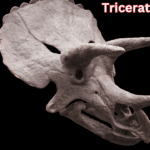Introduction
The African Elephants, the world’s biggest land vertebrate, is crucial to biodiversity and the soundness of environments. Found in savannas, backwoods, and deserts, these savvy goliaths display complex social behavior and correspondence. Safeguarding their environments battles poaching, jam wildlife corridors, and shields their job as cornerstone species, fundamental for natural balance.
Overview of African Elephants
The African elephant, a foundation of Africa’s environments, is loved for its natural and social importance. These superb animals, isolated into two species — savanna elephants and forest elephants, shape their living spaces in significant ways. They are considered keystone species, fundamental for biodiversity.
In African environments, elephants go about as ecosystem engineers, keeping up with living spaces for other natural life. By thumping down trees, they make open regions that advantage brushing creatures. Their manure scatters seeds, supporting woodland recovery and advancing plant variety. These exercises support a flourishing trap of life.
A key distinction among African and Asian elephants lies in actual characteristics. African elephants have bigger ears molded like the African landmass, while Asian elephants have more modest, adjusted ears. Furthermore, African elephants have two “fingers” at the tip of their trunks, contrasted with the Asian species’ single finger.
African elephants are bigger than their Asian partners, with savanna elephants being the biggest earthly creatures. They gauge as much as six tons, while Asian elephants are generally more modest. These distinctions feature the one of a kind transformative ways of these species.
Typically, African elephants are known for their profoundly social structures, with crowds drove by a matron. Asian elephants additionally live in gatherings, yet their social elements are less complicated. This reflects variations to unmistakable conditions.
The significance of African elephants stretches out past biodiversity. They draw in the travel industry, which creates income for protection and neighborhood networks. Their presence represents Africa’s rich regular legacy, motivating worldwide endeavors to safeguard these animals.
Safeguarding African elephants is urgent for environment balance and worldwide biodiversity. Preserving them guarantees the endurance of incalculable species that rely upon their job as ecological stewards. The battle against poaching and living space misfortune is fundamental for their future.
In outline, African elephants are environmental forces to be reckoned with and social symbols, recognized from their Asian family members by size, highlights, and conduct. Defending them upholds environments, economies, and the planet’s regular legacy.
Why African Elephants Matter
The African elephant assumes an imperative part in keeping up with the soundness of environments. As keystone species, their exercises, like clearing vegetation and scattering seeds, shape environments and guarantee biodiversity. Without them, numerous biological systems would weaken, affecting endless plant and creature species.
Their ecological significance stretches out to water safeguarding. Elephants search for water during dry seasons, making watering openings that benefit other natural life. These activities make them imperative for supporting life in testing conditions like savannas and backwoods.
Socially, African elephants are notorious images in numerous African customs. They address strength, shrewdness, and perseverance in different fables and functions. Networks living close to elephants view them as both a profound presence and a sign of Africa’s regular legacy.
Financially, elephants are vital to ecotourism. Travelers from around the world visit Africa to observe these glorious animals in their regular natural surroundings, supporting neighborhood and public economies. Safaris and untamed life parks rely upon their presence.
Elephants additionally contribute in a roundabout way to farming by preparing soils through their waste. This improves the land, supporting ranchers and neighborhood food creation. Their biological commitments hence have unmistakable monetary effects.
The unlawful ivory trade, notwithstanding, compromises the two elephants and economies. Poaching reduces elephant populaces and subverts the travel industry, denying networks of feasible pay sources. Protection endeavors are fundamental for battling this disastrous practice.
By safeguarding African elephants, we protect their cultural importance, financial worth, and ecological jobs. Their endurance benefits untamed life as well as the human networks that depend on their reality.
Basically, African elephants matter since they are environmental planners, social images, and monetary support points. Protecting them guarantees a future wealthy in biodiversity and social association.
Characteristics of African Elephants
Physical Features
The African elephant, the biggest land warm blooded animal, can gauge as much as 14,000 pounds and stand more than 13 feet tall, overshadowing its more modest Asian elephant partner. Females are somewhat more modest yet at the same time gigantic.
A principal trait is their large ears, molded like the African mainland. These ears assist with controlling internal heat level, fundamental for endurance in warm environments, by disseminating heat when fluttered.
Their tusks, made of ivory, fill some needs, including searching for water, taking bark from trees, and self-preservation. Not at all like Asian elephants, both male and female African elephants develop tusks.
The trunk, an exceptionally flexible instrument with north of 40,000 muscles, permits them to get a handle on objects, hydrate, and convey. African elephants’ trunks have two “fingers,” offering better expertise thought about than their Asian family members.
African elephants’ massive size, iconic tusks, enormous flapping ears, and multifunctional trunks make them extraordinary and imperative to their biological systems.
Behavioral Traits
African elephants show complex social structures, drove by a matron, the most seasoned and generally experienced female. Crowds comprise of females and their posterity, shaping very close gatherings fundamental for endurance and information move.
The authority directs the crowd, utilizing her experience to track down food, water, and safe movement courses. Guys regularly leave the crowd upon development, framing free unhitched male gatherings or living singularly.
Elephants impart through different techniques, including vocalizations, non-verbal communication, and infrasound — low-recurrence sounds unintelligible to people. These sounds travel significant distances, permitting them to arrange development and sign risk.
Contact and viewable signs likewise assume a part in their collaborations. Their trunk is frequently utilized for soothing or holding, displaying their close to home profundity.
Their matriarchal hierarchy, high level communication techniques, and profound close to home securities feature the insight and social intricacy of these delicate goliaths, basic to their prosperity as an animal groups.
Intelligence and Memory
African elephants are famous for their exceptional intelligence and memory. They have progressed problem-tackling skills, involving devices and adjusting ways of behaving to conquer difficulties in their current circumstance.
Their extraordinary memory assists them with recalling crucial areas, for example, waterholes and movement courses, even after many years. This capacity guarantees their endurance during dry spells or ecological changes.
Elephants additionally perceive and recall people, including people who have treated them sympathetic or presented dangers. This social mindfulness mirrors their profound capacity to appreciate individuals on a deeper level.
Interesting stories uncover their capacity to review previous occasions, featuring their mind boggling insight. For example, crowds have been noticed returning to where perished individuals lay.
The problem-settling abilities, long haul memory, and close to home profundity of African elephants exhibit their unmatched insight, basic for exploring their dynamic surroundings and keeping up with social securities.

Habitat and Range
Natural Habitats of African Elephants
African elephants possess different conditions, including savannas, timberlands, and deserts. In savannas, they munch on grasses, while woodlands give products of the soil. Desert-adjusted elephants get by in parched districts by finding scant water sources.
Their capacity to flourish in shifted ecosystems features their flexibility. Woods elephants, more modest and antisocial, lean toward thick vegetation, while savanna elephants meander open fields, frequently close to water bodies.
Occasional migration patterns are essential for endurance. Elephants head out immense distances to track down food, water, and appropriate territories, frequently following old courses went down through ages.
These relocations support biological system wellbeing, scattering seeds and making ways for other natural life. Safeguarding these wildlife corridors guarantees biodiversity and the elephants’ drawn out endurance.
The differed environments of African elephants and their seasonal migrations show their biological significance and versatility, crucial for supporting the scenes they occupy.
Countries Home to African Elephants
African elephants are appropriated across sub-Saharan Africa, flourishing in more than 37 nations. Key populaces are tracked down in Botswana, Kenya, Tanzania, South Africa, and Zimbabwe, among different countries.
They occupy different biological systems, including savannas, woodlands, and deserts, contingent upon the district. Botswana, for instance, flaunts the biggest elephant populace, basically in the Okavango Delta.
Safeguarded regions and reserves are basic for their preservation. Outstanding areas incorporate Kenya’s Ambrose Public Park, Tanzania’s Serengeti, and South Africa’s Kruger Public Park, which shield elephants from poaching and living space misfortune.
Natural life halls associating these stores empower migration, guaranteeing hereditary variety and admittance to assets. Cooperative endeavors between countries advance trans boundary preservation drives.
The wide conveyance of African elephants across sub-Saharan Africa and their dependence on protected reserves feature the requirement for proceeded with worldwide protection endeavors to get their future.
Diet and Feeding Habits
What Do African Elephants Eat?
African elephants are herbivores, consuming an assortment of vegetation, including grasses, organic products, leaves, and tree husk. This different eating regimen upholds their enormous size and high energy needs.
Bark is an especially significant food source, giving elephants fundamental supplements like calcium and fiber. They likewise appreciate occasional organic products, which offer hydration and energy.
A grown-up elephant can eat as much as 300 pounds of food day to day, investing the vast majority of its energy taking care of. They additionally hydrate each day, particularly in parched environments.
Their searching conduct benefits environments, as they scatter seeds through their manure, advancing vegetation development and biodiversity in their territories.
The herbivorous diet and colossal daily consumption of food and water feature the fundamental job of African elephants in forming and supporting their environments.
Impact on Their Environment
African elephants are imperative ecosystem engineers, reshaping scenes through their ways of behaving. By thumping down trees and stomping on plants, they make clearings that advantage touching creatures and advance plant variety.
Their compost scatters seeds, supporting the recovery of backwoods and adding to the development of vegetation. This guarantees the strength of environments and supports an assortment of untamed life.
Notwithstanding, high elephant populaces can have negative impacts on vegetation. Overgrazing and tree obliteration might prompt natural surroundings debasement, decreasing assets for different species and adjusting biological systems.
Overseeing elephant populaces and safeguarding their natural surroundings guarantees their positive commitments offset likely harm, keeping up with environmental equilibrium.
The double job of African elephants as ecosystem engineers, with both advantageous and testing influences on vegetation, features their vital association with their current circumstance and the requirement for adjusted protection endeavors.
Reproduction and Life Cycle
Mating and Gestation
African elephants have special courtship rituals, where guys vie for the consideration of females in estrus. Prevailing bulls, frequently in musth, display uplifted hostility and expanded testosterone levels to get mating freedoms.
Females assume a functioning part in picking their mates, frequently choosing the most grounded and most experienced bulls. This guarantees the best hereditary qualities for their posterity.
The species holds the record for the longest gestation period among warm blooded creatures — an amazing 22 months. This drawn out advancement time permits elephant calves to be conceived exceptionally evolved and better prepared for endurance.
After birth, calves depend on their moms and the group for security and supporting. These solid social bonds add to their endurance in nature.
The unique romance behaviors and phenomenal 22-month incubation period of African elephants highlight their organic intricacy and the significance of saving their conceptive cycles for species endurance.
Raising Elephant Calves
In African elephant crowds, the role of the herd is significant in sustaining youthful calves. While moms give essential consideration, different females, particularly more seasoned family members, help safeguard and guide the calves, guaranteeing their wellbeing.
The social structure inside the crowd encourages learning, with calves emulating grown-up ways of behaving like taking care of, correspondence, and strolling. These associations add to their turn of events, showing them essential abilities to survive.
Achievements in a calf’s improvement incorporate remaining promptly after birth, figuring out how to involve their trunks for taking care of and correspondence, and slowly turning out to be more free as they mature.
Calves regularly remain nearby their moms for quite a long time, areas of strength for framing. The group’s aggregate consideration assists them with flourishing in the wild, guaranteeing their drawn out endurance.
The role of the herd in nurturing calves and the key milestones in their advancement are fundamental for the endurance of African elephants.

Threats to African Elephants
Human-Wildlife Conflict
African elephants face expanding dangers due to habitat loss from agriculture and urbanization. As human populaces grow, woods and savannas are cleared for cultivating and foundation advancement, contracting the elephants’ common habitats.
This habitat fragmentation powers elephants into closer contact with human settlements, expanding the gamble of harvest assaulting and harm to property. These cooperations frequently lead to counter, endangering elephants of being killed.
Furthermore, the encroachment on relocation routes disturbs elephants’ occasional development designs. Without admittance to customary ways, elephants face difficulties tracking down food and water, jeopardizing their endurance.
Endeavors to moderate this contention include making wildlife corridors and advancing economical land-use rehearses that permit the two people and elephants to coincide.
Human-untamed life conflict brought about by habitat loss and migration course encroachment undermines African elephants, underlining the requirement for adjusted preservation and land the executives arrangements.
Poaching and the Ivory Trade
The ivory trade has a long, dim history, going back hundreds of years when ivory was profoundly esteemed for craftsmanship and fancy use. In spite of global boycotts, the interest for ivory stays high, driving unlawful poaching exercises.
Today, poaching keeps on obliterating African elephant populaces. Criminal organizations target elephants for their tusks, which are then snuck and sold on the bootleg market. This has prompted a huge decrease in elephant numbers, especially in locales like Focal Africa.
The devastating effects of the ivory exchange reach out past populace misfortune. Poaching upsets social designs, as the demise of matrons leaves groups defenseless. Furthermore, more youthful elephants face endurance challenges without the direction of experienced pioneers.
Preservation endeavors are in progress to battle the ivory exchange, with stricter regulations and expanded mindfulness pointed toward diminishing interest and safeguarding elephants.
The ivory trade and poaching keep on having devastating effects on elephant populations, making critical preservation activity vital to their endurance.
Climate Change Impact
Environment change is causing huge modifications in the habitats of African elephants, especially in areas of changing precipitation examples and climbing temperatures. These progressions disturb vegetation development, influencing food hotspots for elephants.
Furthermore, water availability is progressively eccentric, with dry seasons turning out to be more incessant and serious. Elephants rely upon admittance to water for endurance, and modified precipitation examples can make it harder to track down these crucial assets.
These natural changes increment the vulnerability of elephants to other stressors, like infection and contest for assets. Delayed pressure can debilitate elephant wellbeing and influence propagation rates.
The moving scene additionally influences relocation courses, compelling elephants to move further and longer distances, increasing their contention with human populaces.
Environment change is intensifying the vulnerability of African elephants, adjusting habitats and water availability, and expanding their vulnerability to ecological and social stressors.
Conservation Efforts
Anti-Poaching Measures
Worldwide drives, like the CITES (Show on Global Exchange Imperiled Species), mean to manage the ivory trade and decrease poaching by implementing stricter regulations and punishments. These endeavors have prompted expanded mindfulness and joint effort between countries to safeguard elephants.
Locally, techniques like community-based conservation draw in nearby populaces in protecting elephants. By including nearby networks in enemy of poaching endeavors, these projects assist with diminishing human-elephant struggle and give economical jobs.
Innovation assumes a critical part in protecting elephants. Drones, GPS tracking, and camera traps are utilized to screen elephant populaces and distinguish poaching exercises progressively, permitting quick reactions.
Also, smart collars give information on elephant developments, supporting preservationists in anticipating relocation designs and forestalling poaching in weak regions.
Worldwide initiatives and local strategies, joined with technology, are essential in the battle against poaching and shielding African elephants from elimination.
Habitat Restoration Projects
Endeavors to reestablish migration corridors are significant for the endurance of African elephants. By restoring these pathways, elephants can securely go between living spaces, guaranteeing admittance to food, water, and reproducing regions.
These halls assist with diminishing human-untamed life struggle, as elephants can keep away from populated regions and track down assets without infringing on ranches and settlements. State run administrations and NGOs are cooperating to make safeguarded courses that help elephant movement.
Local area based preservation programs assume a crucial part in living space rebuilding. By including nearby populaces in preservation endeavors, these projects assist with safeguarding environments while giving maintainable vocations.
These drives advance natural instruction and urge networks to get a sense of ownership with elephant security, making a cooperative exertion that benefits both untamed life and individuals.
Environment restoration and community-based conservation are fundamental for keeping up with safe migration corridors and guaranteeing the drawn out endurance of African elephants.
Laws and Policies for Protection
Worldwide agreements like CITES (Show on Global Exchange Imperiled Species) assume a basic part in the security of African elephants. Refers to controls the exchange of elephant ivory and other elephant items, assisting with forestalling unlawful dealing and poaching.
Refers to has essentially raised worldwide mindfulness and advanced stricter regulations across part nations. Nonetheless, the outcome of these arrangements relies upon public requirement and obligation to their execution.
The role of African governments is critical in guaranteeing viable enforcement of untamed life security regulations. State run administrations are answerable for dispensing assets to against poaching units, further developing line security, and instituting regulation to safeguard elephants.
Also, numerous African countries have created explicit public techniques to safeguard elephants, for example, making untamed life saves and forcing severe punishments for poaching.
Global agreements like CITES and the dynamic role of African governments in authorization are crucial to the continuous assurance of African elephants.
Frequently Asked Questions About African Elephants
1. What is the life expectancy of an African elephant?
African elephants can satisfy 60-70 years in the wild, with females living longer than guys.
2. What amount do African elephants gauge?
Grown-up African elephants can weigh between 5,000 to 14,000 pounds, with guys being fundamentally heavier than females.
3. What do African elephants eat?
African elephants are herbivores, benefiting from grasses, organic products, tree rind, and leaves. They can eat as much as 300 pounds of food everyday.
4. For what reason are African elephants imperiled?
The essential dangers to African elephants incorporate poaching for their ivory, environment misfortune, and human-natural life struggle. Environmental change is additionally influencing their food and water sources.
5. How do African elephants convey?
Elephants convey utilizing vocalizations, non-verbal communication, and infrasound, a low-recurrence sound that can travel significant distances.
6. What is the job of elephants in biological systems?
African elephants are biological system engineers, assisting with keeping up with solid natural surroundings by scattering seeds, making water openings, and advancing plant variety.
7. How long is an African elephant’s growth period?
The incubation time frame for an African elephant is 22 months, the longest of any land creature.
8. How do elephants assist with protection endeavors?
Elephants assume an essential part in seed dispersal and keeping up with sound environments. They likewise focus on natural issues, driving protection mindfulness and drives.
9. How do African elephants safeguard themselves from hunters?
Because of their size and strength, grown-up elephants have not many normal hunters. Nonetheless, calves depend on the crowd for security, especially from lions.
10. Are African elephants not quite the same as Asian elephants?
Indeed, African elephants are bigger, have greater ears formed like the African mainland, and the two guys and females develop tusks, in contrast to Asian elephants, where just guys commonly have tusks.

Conclusion
In conclusion, African elephants are imperative to the soundness of biological systems across sub-Saharan Africa. Their job as ecosystem engineers features the significance of safeguarding their natural surroundings and tending to dangers like poaching and environmental change.











One thought on “African Elephants”